The easiest way to make perfect pot roast: Brown a 3-4 lb chuck roast, simmer with onions, garlic, carrots, celery, broth, and a precise spice blend (thyme, rosemary, paprika) at 325°F for 3-4 hours until fork-tender. This complete guide reveals the exact spice ratios, timing, and science-backed techniques professional chefs use for consistently tender, flavorful results every time.
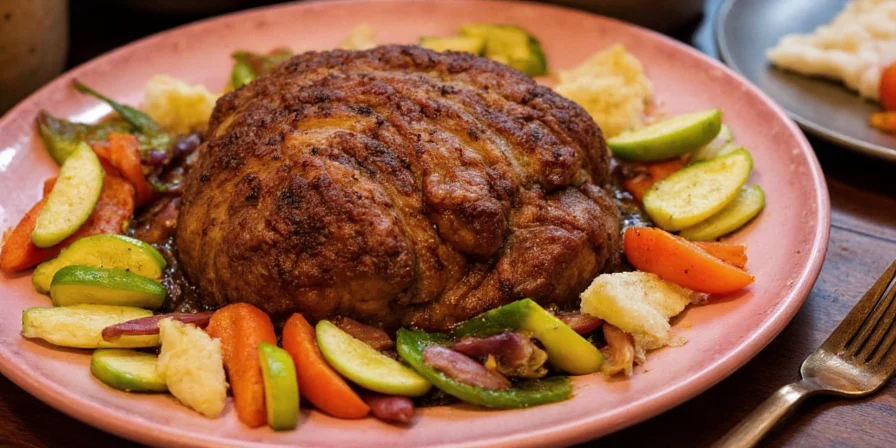
What You'll Need: Essential Ingredients for Foolproof Pot Roast
Total time: 4 hours (30 minutes prep, 3.5 hours cooking) | Serves: 6 | Difficulty: Easy
- 3–4 lb chuck roast (well-marbled for best results)
- 2 tbsp olive oil
- 1 large yellow onion, chopped
- 3 garlic cloves, minced
- 2 carrots, peeled and cut into chunks
- 2 celery stalks, sliced
- 4 cups quality beef broth (low sodium recommended)
- 2 tsp tomato paste
- 1 tbsp Worcestershire sauce
- 1.5 tsp kosher salt (adjust to taste)
- 1 tsp freshly cracked black pepper
- 1 tsp dried thyme
- 1 tsp dried rosemary (or 2 sprigs fresh)
- 1 tsp smoked paprika
- 2 bay leaves
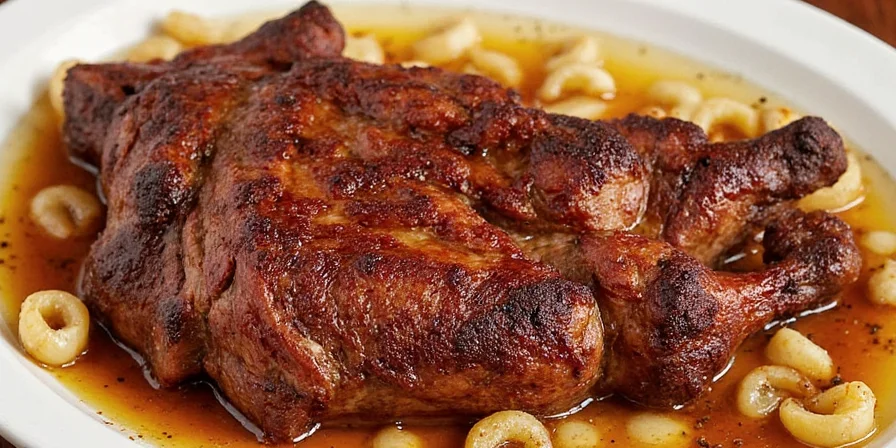
Spice Science: Exact Ratios for Maximum Flavor Impact
Most home cooks miss that spices have different solubility and heat tolerance. Add these at precise moments for scientifically optimized flavor:
| Spice | Optimal Addition Time | Exact Measurement | Flavor Contribution |
|---|---|---|---|
| Thyme | With salt/pepper rub | 1 tsp dried (or 1 tbsp fresh) | Earthy base note that withstands long cooking |
| Rosemary | With thyme in rub | 1 tsp dried (or 2 sprigs fresh) | Robust backbone that enhances meaty flavors |
| Smoked Paprika | After searing, before liquid | 1 tsp (not regular paprika) | Deepens flavor through fat solubility |
| Black Pepper | With initial rub | 1 tsp freshly cracked | Activates other flavors without bitterness |
| Bay Leaves | When adding liquid | 2 leaves | Subtle complexity without overpowering |

Why This Spice Combination Works: The Chemistry Explained
Professional chefs understand that spice effectiveness depends on chemical properties. Thyme's thymol and rosemary's rosmarinic acid are heat-stable compounds that survive long cooking, creating depth without bitterness. Smoked paprika's capsaicinoids dissolve in fat during the Maillard reaction (browning), distributing flavor evenly throughout the meat. Adding pepper early allows piperine to activate flavor receptors throughout cooking, while bay leaves' eugenol provides subtle background notes that intensify over time. This precise timing and selection creates layered complexity that random spice dumping cannot achieve.
Step-by-Step Pot Roast Method: The Foolproof Technique
- Dry & Season (15 mins before cooking): Pat roast dry with paper towels. Combine salt, pepper, thyme, and rosemary. Rub thoroughly over all surfaces. Let sit at room temperature.
- Perfect Sear (8-10 mins): Heat oil in Dutch oven over medium-high. Sear roast on all sides until deep golden brown (critical for flavor development).
- Sweat Aromatics (5 mins): Remove roast. Add onions, garlic, carrots, celery. Cook until softened but not browned.
- Build Flavor Base (3 mins): Stir in tomato paste and Worcestershire. Add smoked paprika and cook 1 minute to bloom flavors.
- Low & Slow Cooking (3-4 hours): Return roast to pot. Add broth to cover 1/3 of meat. Add bay leaves. Cover and cook at 325°F until fork-tender (195-205°F internal temperature).
- Rest & Finish (20 mins): Remove roast, cover loosely. Skim fat from liquid. Simmer sauce to reduce if needed. Slice against the grain.
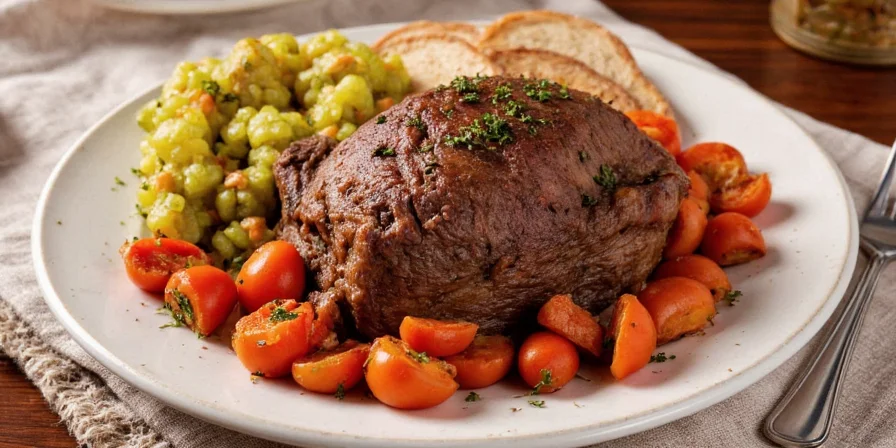
Proven Tips for Consistently Perfect Pot Roast
- Temperature is critical: Use a probe thermometer to monitor internal temperature. 200°F is ideal for fall-apart tenderness.
- Don't rush the sear: Proper browning creates complex flavor compounds through the Maillard reaction. Don't move the meat until it releases naturally from the pot.
- Skim fat properly: After resting, chill cooking liquid briefly to solidify fat for easy removal while preserving flavor.
- Slice against the grain: This shortens muscle fibers for maximum tenderness, especially important for tougher cuts like chuck.
- Make ahead advantage: Pot roast tastes better the next day as flavors fully meld. Reheat gently with extra broth.
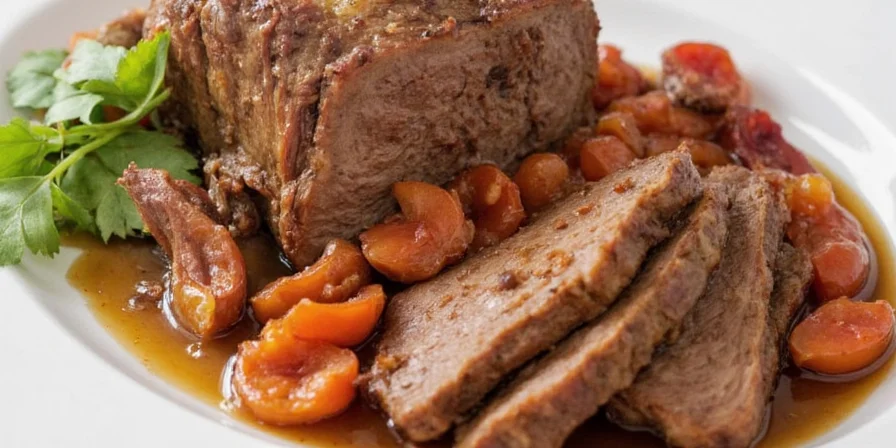
Science-Backed Flavor Enhancements
- Acid balance (essential): Add 1 tbsp balsamic vinegar during last 30 minutes. Acid stimulates taste receptors, cutting through richness.
- Umami boost: Include 2 dried porcini mushrooms with the broth for natural glutamates that enhance meaty flavors.
- Sweet contrast: Add 1 diced parsnip (not potato) for natural caramelization and subtle sweetness that complements beef.
- Finishing fat: Stir 2 tbsp cold butter into sauce at the end for emulsified, silky texture and rounded flavor.
- Herb finish: Garnish with fresh parsley or chives to add brightness that contrasts with deep cooked flavors.
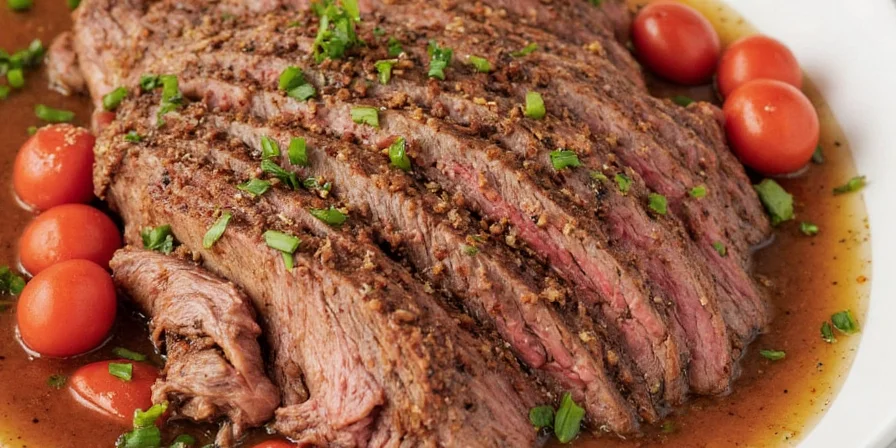
Frequently Asked Questions: Pot Roast Mastery
- Why is my pot roast tough even after long cooking?
- Insufficient browning or wrong cut. Chuck roast needs proper searing to develop flavor compounds, and must reach 195-205°F internal temperature for collagen to fully break down.
- Can I use a slow cooker instead of oven?
- Yes, but sear first in a pan. Slow cookers operate at lower temperatures (190-200°F), which requires 8-10 hours to achieve the same tenderizing effect as 3-4 hours in a 325°F oven.
- How do I fix a bland pot roast?
- Add 1 tsp soy sauce and 1/2 tsp fish sauce to the cooking liquid. These contain natural glutamates that enhance savory flavors without making the dish taste Asian.
- Should I add wine to pot roast?
- Only if you cook it properly. Add 1/2 cup dry red wine after searing vegetables, then simmer until reduced by half before adding broth. This removes harsh alcohol notes while preserving flavor compounds.
- What's the best way to reheat leftovers?
- Place meat and sauce in a covered dish with 2 tbsp broth. Heat at 300°F until internal temperature reaches 140°F. Avoid microwaving, which creates uneven heating and toughens meat.
The Secret to Perfect Pot Roast: Precision Over Complexity
Mastering pot roast isn't about exotic ingredients—it's understanding the precise science of spice timing, temperature control, and flavor balancing. By following these exact measurements and timing guidelines, you'll consistently create restaurant-quality results that impress. The critical factors are: proper searing temperature, exact spice addition sequence, and precise internal cooking temperature. These scientifically optimized techniques transform ordinary ingredients into extraordinary meals with minimal effort. Save this guide for your next special occasion—you'll never serve dry, bland pot roast again.
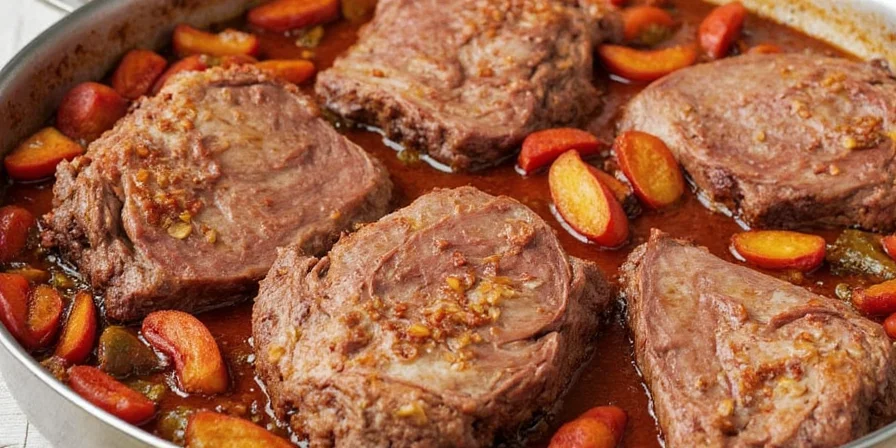

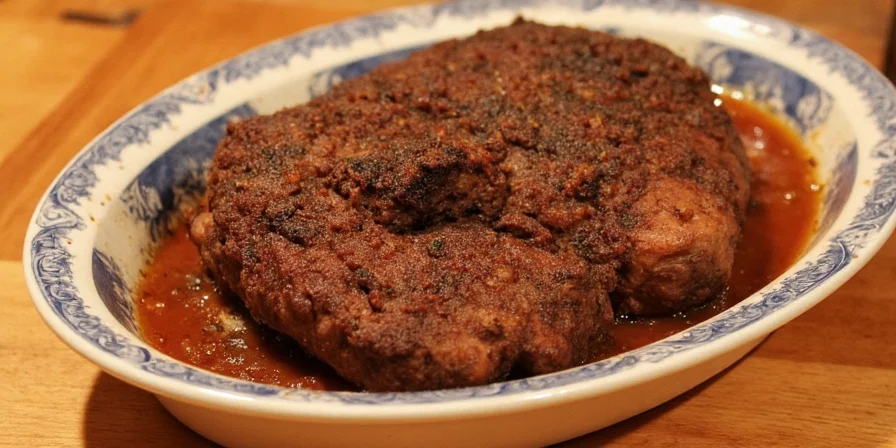









 浙公网安备
33010002000092号
浙公网安备
33010002000092号 浙B2-20120091-4
浙B2-20120091-4